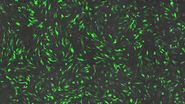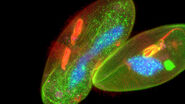The Power of spatial biology
Location is key to understanding biological mechanisms, from the inner workings of subcellular components to how cells form and interact across normal and diseased tissues. In research areas including cancer biology and immunology, there is a growing trend towards spatial biology, which uses transcriptomics, imaging, and other approaches to put dissociated cellular information into spatial context.
As the spatial biology trend requires researchers to use imaging in their daily lab work, light and electron microscopy (EM) technologies are also evolving to support the need for even greater spatial context. Nowadays, researchers will typically use several different imaging approaches, including multiplex imaging, laser microdissection, and AI-based image analysis, to study a tissue from different angles.
Download the eBook and see how different microscopy techniques could enable your spatial biology research.







